#wanted to do a resin coating instead of a mod podge one but 1) i dont think i have enough and 2) it would take wayyyy too long to cure
Explore tagged Tumblr posts
Text
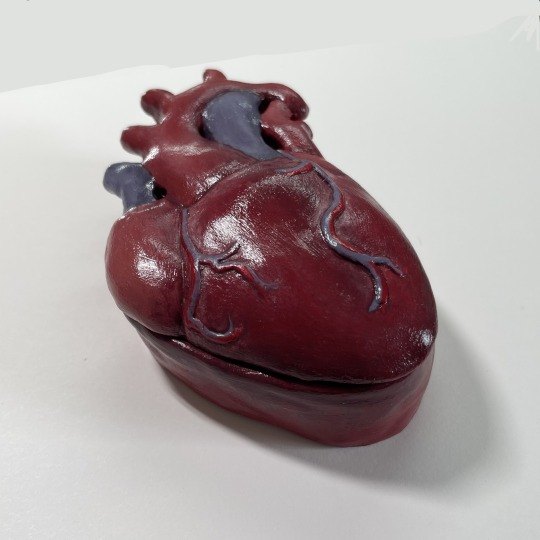
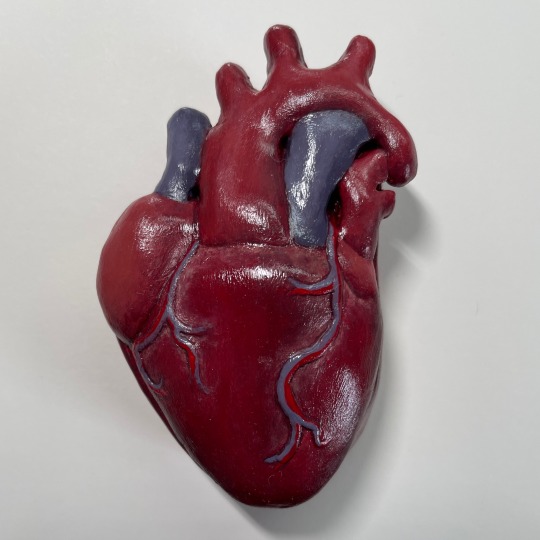
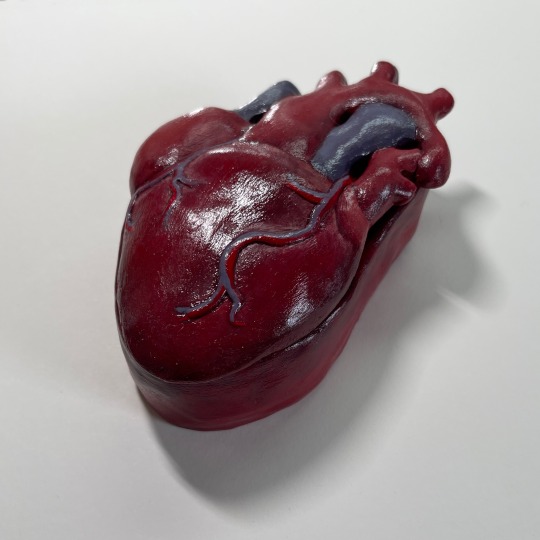
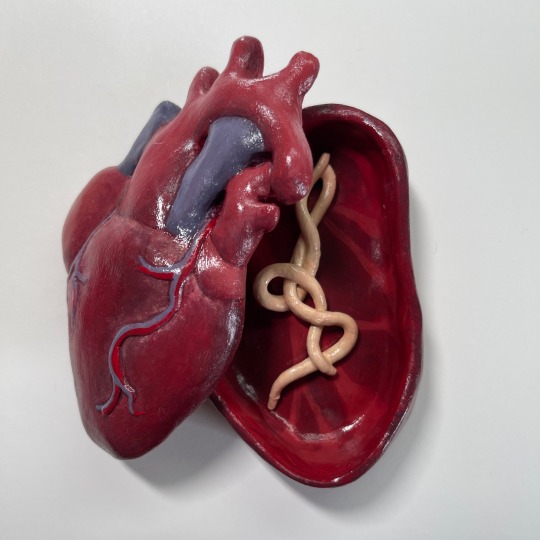
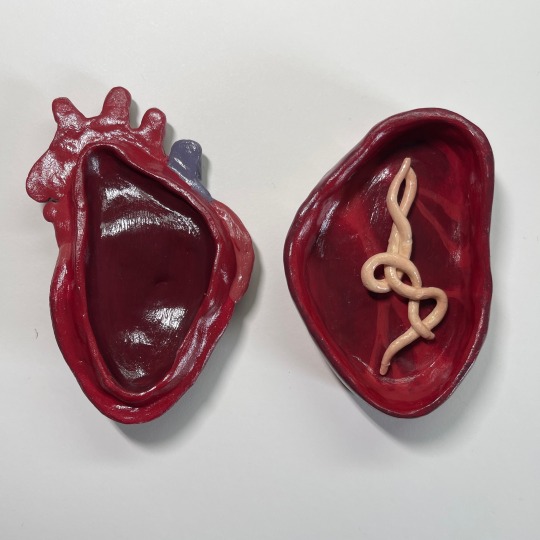
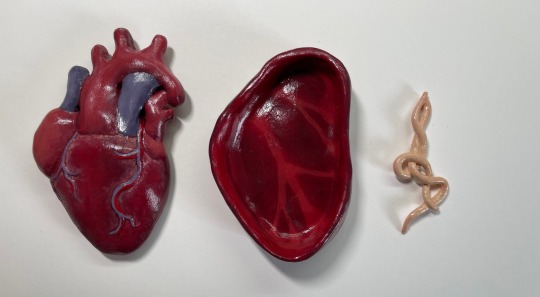
a heart shaped trinket box i made :3
the little yellow/white things are heartworms
air-dry clay, acrylic paint, mod podge. (4.5” x 2.5” x 1.5”)
#wanted to do a resin coating instead of a mod podge one but 1) i dont think i have enough and 2) it would take wayyyy too long to cure#ark’s art#keep forgetting to post this. ah well#im also putting this on my neocities when its ready
215 notes
·
View notes
Text
Out in the desert, no one can find you... (Hex Tiles 1)
A sharp wind whistles through the desert dunes, bringing no reprieve to the travelers following the thin paths left out in the sand. Don't drink from the river — the plants that grow along its shores contain toxins that could leave a grown man coughing up blood, and chemical spills float through the current. A faraway road carries the rare drone-tank, long abandoned from any sort of human use.
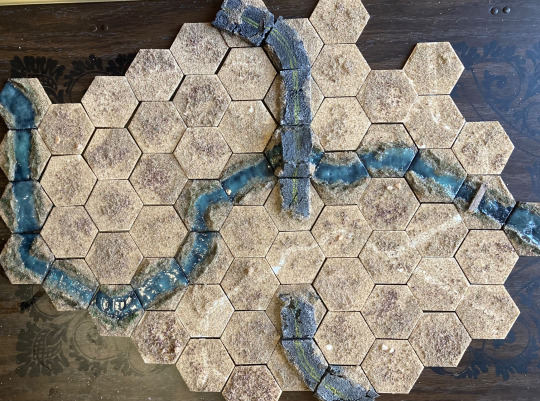
My newest hobby, to distract myself on months when the purse is a bit too tight to be buying plastic crack from Games Workshop, is to build modular hex tiles! It's super easy — I pick up a hundred of these wooden MDF tiles from Amazon for $10 (they're advertised as 2", but they're 1.75" from tip to tip, and each side is 1"), grab any spare craft supplies I have lying around, and get to work! They're super quick (this first batch of one hundred took me around a week) and they open the door to a lot of cool experimentation. A lot of this is inspired by the work of u/Marcus_Machiavelli over on Reddit, who makes these fantastic modular hive city components that I hope to someday be able to emulate.
I'm making these for two purposes, neither of which I've put in practice yet but I'm hoping to get to do at some point. They're for:
Any mass-battle games played at 6mm. This could also work for Adeptus Titanicus or the upcoming Epic reboot that Games Workshop is working on.
Tactical TTRPGs like Lancer that are played with large beings, who can operate on a 6mm scale.
Once I get some games in with them, I'm sure I'll encounter future problems and reassess how I approach them. But for now, this is what I've got!
I Hate Sand
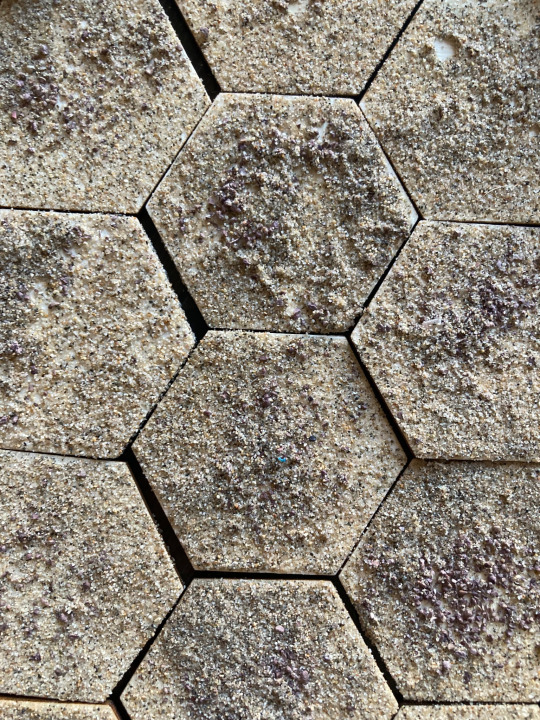
The first set of tiles I made, to serve as the backdrop for the rest of them, are these sand tiles. I chose to make this a desert (and thus make a bunch of sand tiles) because I already had some sand lying around, and because it's really cheap and easy to work with. Be careful though! Anakin was right; sand sucks. Try and pick up a finer grain than what I went with, apply the sand in a more-controlled location than I did, and secure it better than I did too. But here's how I did them:
Coat the surface of the hex with a mix of PVA glue and water.
Sprinkle on a light dusting of gravel or small rocks.
Apply a thick coat of sand on top of the gravel.
Knock off excess sand and recycle it for next time.
Spray with 1-2 layers of varnish. (I would recommend a sealant instead, but I didn't have any at the time)
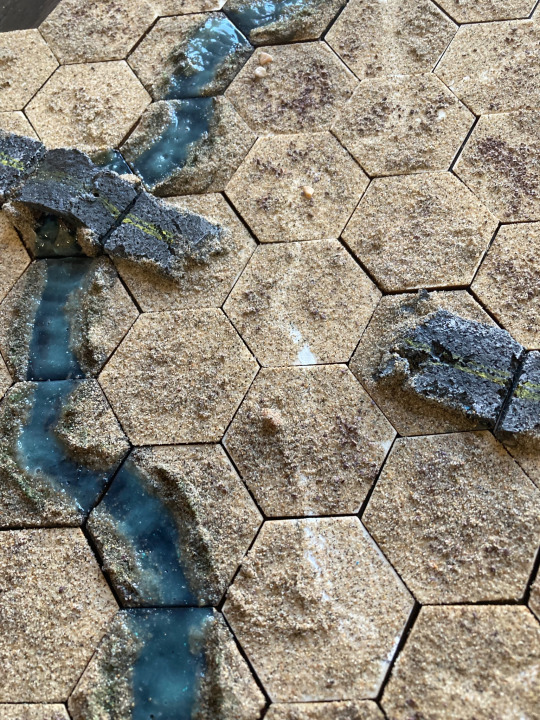
For the ones with little paths on them, I painted the path on with White before applying the gravel or sand, and it shows through well enough! The paths are unnecessary — they're a fun experiment, but I don't think I'll be making more of them in the future.
The Gurgling Creek
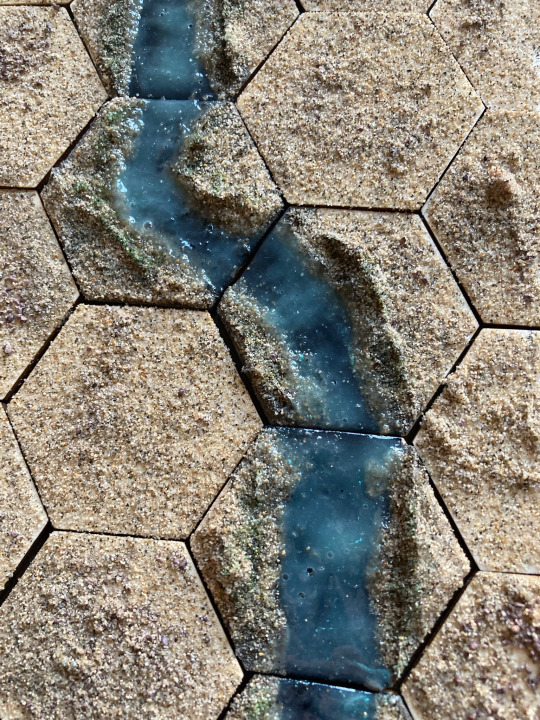
Making the river tiles was a bit more involved, but still pretty easy. The method I came up with I think looks a lot better than just painting on water, and is a lot easier to work with than resin or water effects.
Use some kind of texture gel to build up the riverbanks, trying to have them end around 1/4" on the sides of the tiles where you want your river to connect.
Paint a strip Black where you want the river to flow, running from one edge to another.
Apply sand as before, everywhere except where you painted the black. (If you're worried about fucking this up, you can swap the order)
Varnish (or use sealant) as before.
Take some gloss mod podge and mix it with a light blue paint, and apply in large goopy quantities everywhere you want water to be. Leave overnight to dry. (If you want the river to be less cloudy, apply many thin coats of mod podge instead, letting each layer dry before applying the next)
As an extra, stipple green along the edges of the water and use a dark green wash to create patches of vegetation.
The river pieces are my favorites, and I'm the most proud of them. The tiny bridge was a thin strip of balsa wood, painted white and then washed black. It turned out fine.
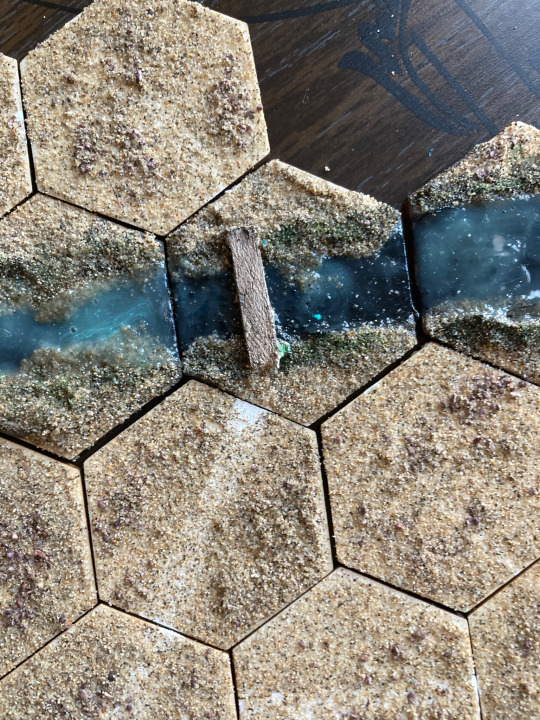
I did a solid mix of straight river pieces and curving river pieces. If I was going to do it again I'd make more curving pieces than straight river pieces, because the curving ones make more sense for how rivers work.
The Road To Nowhere

These road tiles turned out really well, perfect for a run-down highway in the middle of nowhere. Here's how I made them:
Take a piece of corkboard and cut it down to be 1.75" long and 1" wide.
Glue it on a hex with the two edges of the corkboard touching two sides of the hex.
Go at the edges with a knife, making it all worn down and busted up.
In some of these spots, I fucked up and glued the corkboard on wrong. To fix that, break off a chunk and reposition it so it'll connect correctly. This will look like a big fat crack in the middle of the road, which is perfect.
Coat in a layer of mod podge or PVA glue. Leave to dry.
Once dry, paint the cork entirely Gray.
Drybrush White onto the corkboard, focusing on the edges and exposed spots.
Paint two thin yellow lines along the middle of the road. (These are optional, but they do a lot to make the 6mm scale convincing)
Apply sand, as before, onto the ground and up the sides of the road, so it looks like the road is emerging from the sand. Maybe apply some sand in a couple spots in the cracks to make it look like the sand has gotten in there.
Varnish and/or sealant, as before.
Apply a Black wash to the road. (There's a lot of tricks here! If you want the yellow stripes to be more vibrant, you can only paint them on after the first black wash. You can also target spots of sand on the road to make it look like it's asphalt runoff, soaking black into the cracks.)
Apply a second Black wash to the road.
The bridge was a bit more complicated, and took some finicky positioning and a trip to Kung-Fu Tea.
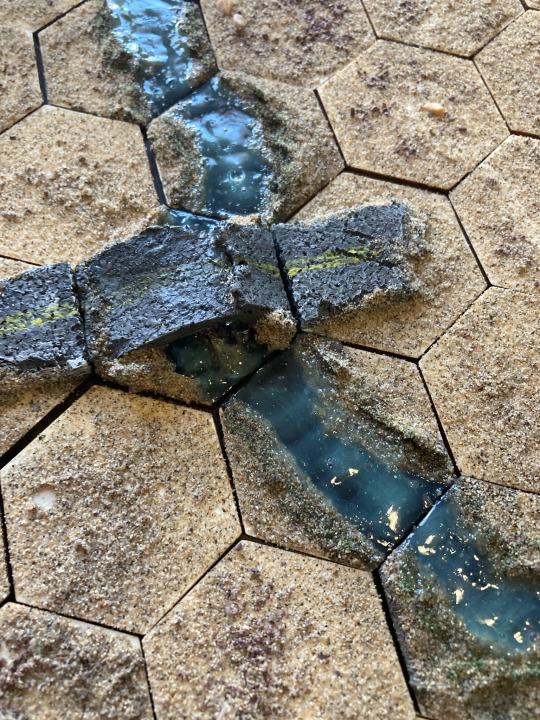
Take a boba tea straw and cut it into 1" segments, then cut them in half, gluing them to the middle of the hex as culverts.
Take corkboard and glue it over the culverts, bending it so it meets the two edges you want the bridge to run along. If it breaks, that's okay — this is a crumbling, middle-of-nowhere bridge.
Use texture gel and spare corkboard to fill in the gaps.
Use texture gel to define the steep edges of the river. Apply a little bit in between the culverts.
Do all the road steps to the road part of the bridge, and all the river steps to the river part of the bridge.

I'm exceedingly proud of the bridge hex. It turned out perfectly, and feels very emblematic of what I want this project to be like.
Why You, Too, Should Make 6mm Terrain
6mm terrain is amazing to make. Mistakes look like part of the landscape or the brain smudges them over due to the small size, and small changes look like fascinating little details. It really opens the imaginative space and I absolutely adore working at this scale. Plus I'm developing a ton of experience with various materials I've never worked with before, so I get to enjoy the triumph of carving foam or corkboard. It rules! I might even try to make a 28mm bridge after the success I had making a 6mm one.
My future plans for this project include cliffs, craters, 3D-printed shantytowns, and overpasses. But all that is for a later date — for now I'm gonna rest on my laurels, and spend the rest of the evening reconfiguring various tile combinations and cackling like a mad scientist.
169 notes
·
View notes
Photo
x 1 clean, clear container with lid x 1 distilled water (helps if hot) x 1 standard glue (clear or glitter) x 1-2 stirrer (toothpick) x 1 colorant (food dye) x 1 glitter x 1 strong, water-resistant glue (hot glue)
Directions
1) Fill container halfway at most with water.
3) Add a drop of glue, stir, and repeat but don’t make it thick-- consistency will determine how fast the glitter settles, and you can’t tell until the glitter's actually there. You will have WAY less glue than water no matter what.
4) Add dye one droplet at a time-- it will be more saturated than you expect, and too much dye will obscure the glitter. Stir until thoroughly mixed.
5) Pour a bit of glitter. Stir or swish to get a sense for how much is in there. Continue adding then swishing until satisfied with the amount.
6) Add glue, stir, and swish to gauge settling speed. Repeat until satisfied with consistency-- mind that a 1:1 ratio will create a thick pseudoslime. Do not fill the container more than 80% of the way.
7) Apply hot glue to the lid or the container’s mouth generously. You want it to form a water-tight seal to prevent leaks, but too much might squeeze out and look sloppy.
8) Snugly fit lid onto container and leave to dry.
9) Enjoy stim. You may want to let it set for awhile.
Tips
Every material can be bought at Dollar Tree or Dollar General (entire thing can be as cheap as $10 tops)
You don't need glue with the water, but I recommend it if you're using glitter
Thrift stores have THE PRETTIEST bottles and jars you've ever seen in your life
Get plastic jars if you're worried about breaking glass ones
Improvise with containers like op did
Use different sizes and colors of glitter to spice up the look
Use mica powder instead of glitter for that velvety/silky look
Add baker's shimmer/luster dust to a beverage for an edible glitter bottle
Fuck with beads, dice, puffballs, jingle bells, plastic straws chopped into smaller segments, or trinkets inside
^ Water not needed for these to be stimmy
Pony beads + water in a glass mason jar... coolest alien space telecommunication laser sound you've ever heard
Caution adding beads/etc: enough shaking may eventually shatter glass containers, especially with more/harder/heavier beads and thinner/less liquid
Bottles with water can develop mildew if left to sit for a long time
Glitter bottles are great gifts, grounding tools, soothing tools... even mind puzzles, jewelry, or home decor
Tip with its own section
Don't use those craft bottles with the corks unless you have waterproof sealant-- the liquid will soak through eventually if the cork is not sealed all over with multiple coats.
Clear resin, silicone, liquid rubber sealant/caulk will work as long as waterproof/-resistant
Silicone/rubber result in a weird texture though
Wax will also seal
Allegedly (???) you can seal corks by using a lighter to weld plastic wrap to it, melting it air-tight around the entire surface ?
Standard glue, wood glue, superglue, Mod Podge, hot glue, and paint will NOT seal cork-- eventually discolors liquid and/or dissolves

427 notes
·
View notes